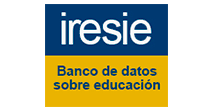A GESTÃO INSTITUCIONAL DOS CURSOS PROFISSIONAIS TÉCNICOS DE NIVEL MÉDIO NA MODALIDADE A DISTANCIA OFERTADOS PELA REDE E-TEC BRASIL: PRIMEIRAS APROXIMAÇÕES
DOI:
https://doi.org/10.5216/ia.v39i3.28738Keywords:
Currículo Referência – Educação Profissional – Educação a DistanciaAbstract
Na última década, o Brasil tem realizado um grande investimento na modalidade da Educação a Distancia. Em 2007 foi criada a Escola Técnica Aberta do Brasil, que oferece Cursos Profissionais Técnicos de Nível Médio na modalidade EaD. A questão colocada por esta pesquisa, de caráter exploratória, tendo como instrumentos a analise documental e questionários via web a 385 gestores destes cursos, foi a de saber como está ocorrendo a gestão no processo de implantação e desenvolvimento destes cursos. Este trabalho apresenta os resultados parciais que apontam as principais dificuldades na gestão: carência de recursos humanos (60,8%), de apoio pedagógico (43,4%); de estrutura física (34,7%); de recursos financeiros (30,4%); bem como na institucionalização dos polos (21,7%), entre outros. (O questionário admitia múltiplas respostas). A pesquisa aponta ainda, algumas das medidas necessárias à consolidação e qualificação da Educação Profissional Técnica de Nível Médio, na modalidade a distanciaDownloads
Downloads
Published
How to Cite
Issue
Section
License
Inter-Ação uses the Creative Commons Attribution 4.0 License for Open Access Journals (Open Archives Initiative - OAI) as the basis for the transfer of rights. Open access means making documents available on the Internet free of charge, so that users can read, download, copy, distribute, print, search, or link to the full text of documents, process them for indexing, use them as input data for software programs, or use them for any other lawful purpose, without financial, legal, or technical barriers.
Authors publishing in this journal agree to the following conditions:
1) Authors retain copyright and grant the journal the right of first publication, with the work simultaneously licensed under the Creative Commons Attribution License, which permits redistribution of the work with attribution and first publication in this journal.
2) Authors are permitted to enter into additional, separate agreements for non-exclusive distribution of the version of the work published in this journal (e.g., for publication in an institutional repository or as a book chapter), with attribution and first publication in this journal.
3) Authors are permitted and encouraged to publish and distribute their work online (e.g. in institutional repositories or on their home page) at any time before or during the editorial process, as this may generate productive changes as well as increase the impact and citation of the published work.















